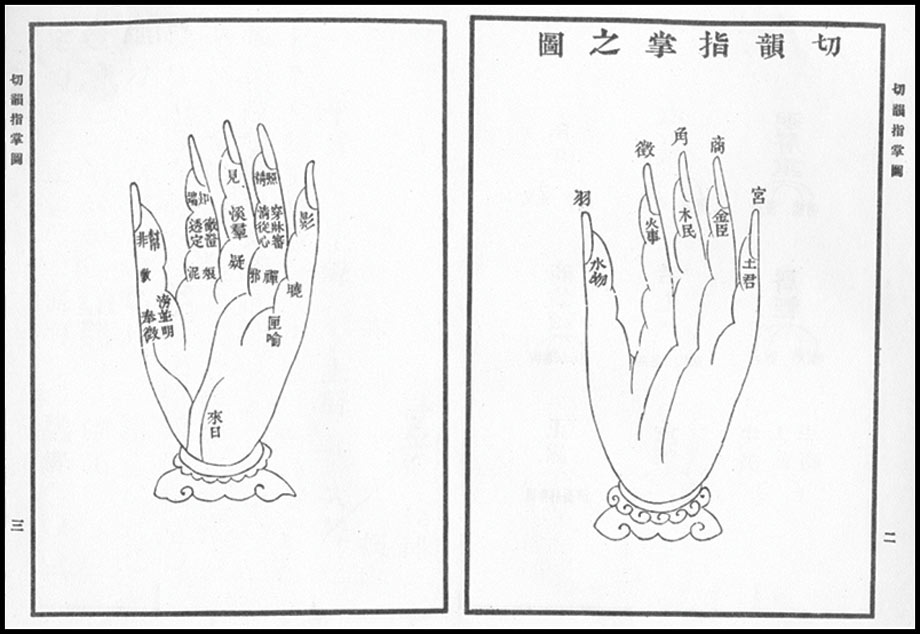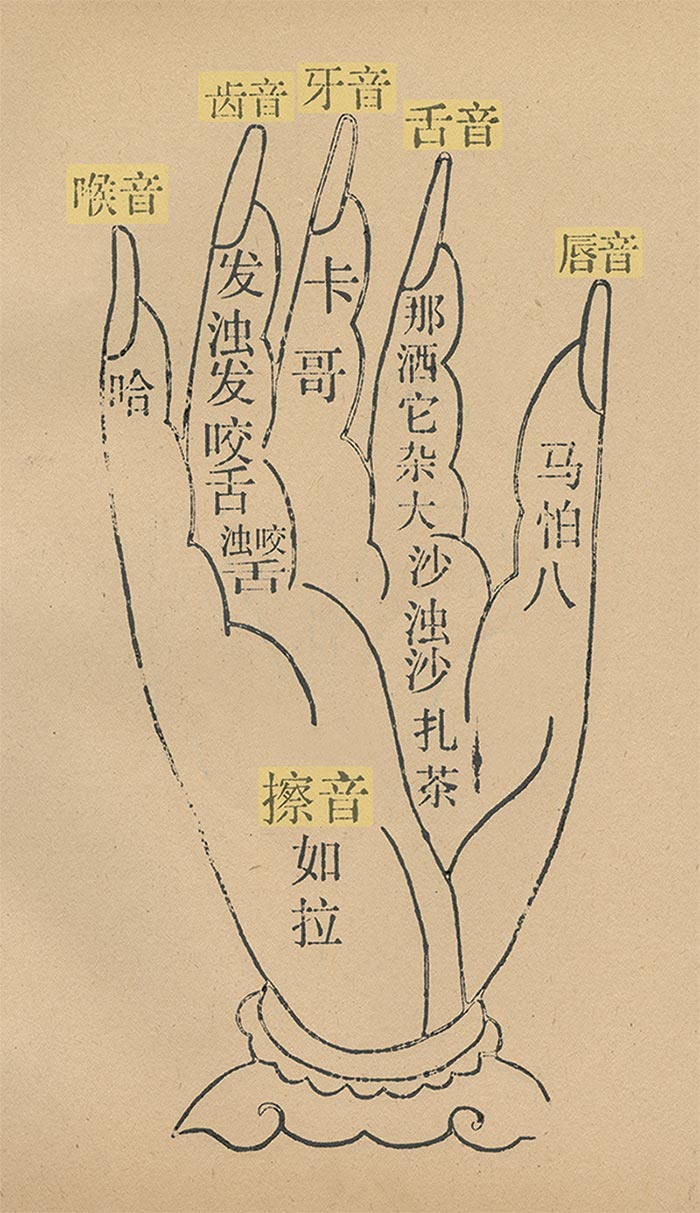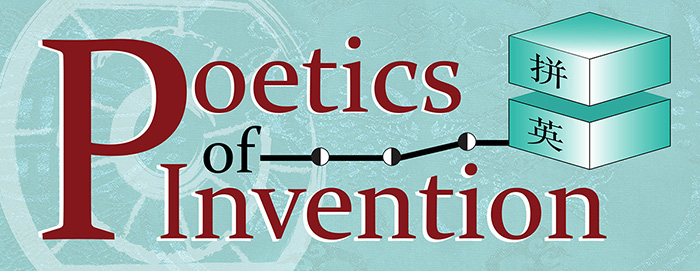English Consonants Organized by Chinese Cosmology

Images of hands such as these were used to relate categories within the Classical Chinese Imperial Knowledge System such as the yin and yang and Five Element theory. The first text to use hands as a mnemonic device for learning phonetics was the sixth century Tang Dynasty rime table known as the “Qie Yun” 切韵. While the rime tables show how vowels relate to the yin and yang system, here the five fingers on one hand represent the five elements (fire, earth, metal, water, wood), each corresponding to one of the five notes of the pentatonic scale. In these recreated images, the hands show how the English consonants correspond to the same five elements and music notes.

The iconography of the hands was also an important aspect of music theory, which was closely related to the guqin (zither). In the traditional Chinese worldview, music theory helped weave together core values like balance and harmony into literature, philosophy, politics, aesthetics, and linguistics. Through these hands we can explicitly see radical interconnectedness of the Classical Chinese Imperial Knowledge System.
The characters above the fingers represent the place of articulation. Starting from the pinkie: throat, teeth, tongue, and lips.
The characters inside the fingers represent the consonants of the English language under the categories defined by the place of articulation. (h/f, v, th/k, g/n, s, z, d, sh, ʒ, j, ch/m, p, b/r, l)


The characters above the fingers represent the pentatonic (five-note) musical scale. Starting with the pinkie finger these are: gong, shang, jue, zhi, and yu.
The characters inside the fingers represent the elements of traditional Chinese cosmology. Starting with the pinkie finger these are: earth, metal, wood, fire, and water.



